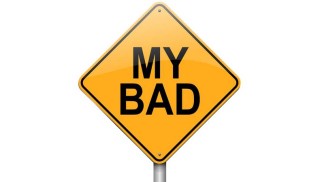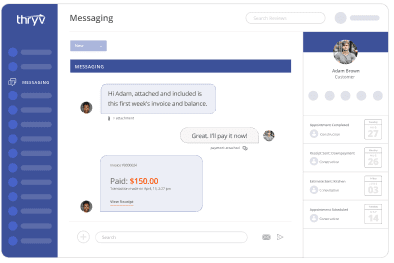Ever have that feeling—the sense of dread of knowing that you messed up? And not just a little bit—a HUGE error.
We’ve all done it. But when we make a major mistake, what can we do to help fix it? Julie Shenkman, a writer for EmploymentMatrix.com said in an article, “…sometimes the making of the mistake isn’t something your manager will spend too much time thinking about; the boss usually dwells more on how he was told about the mistake and how you intend to fix it. So in order to make a good impression on your manager—make sure you right your wrongs in the right way.”
The same philosophy holds true for clients. When a mistake is made, it needs to be acknowledged and we need to explain to our clients how it will be fixed.
In a Harvard Business Review article about owning up to your mistakes, contributing editor Amy Gallo provides tips on how to turn your “gaffes into gold.” Three of her tips are:
- ‘Fess up and acknowledge your mistake. Gallo says it’s critical to be transparent, candid, and own up to the error. Don’t try to blame others. Even if it was a group mistake, acknowledge your role in it. In cases where someone was hurt, issue an apology. However, don’t apologize too much or be defensive. The key is to be action-oriented and focus on the future. How will your misstep be remedied? What will you do differently going forward?
- Reframe the blunder. Gallo recommends that once you’ve admitted your blunder, it may be appropriate to reframe it. “Reframing is not making an excuse, but a genuine effort to help people see the mistake in a different light,” she said. “Poor decisions or flawed processes can sometimes lead to mistakes, but that doesn’t mean that every bad outcome is a mistake. It’s important to understand what was external and internal, what was in your control and what wasn’t. Explaining in a non-defensive way what led to the mistake can help people better understand why it happened and how to avoid it in the future.” For example, let’s say that an approval process did not succeed in finding an error. To reframe the error, you can talk about what the current process is, what went wrong, and how the process will change in the future. “Our current process requires internal approval, but not external. We will add that step in the future to prevent this from occurring again.”
- Not all mistakes are created equal. Some mistakes are easier to overcome than others. Gallo notes that mistakes that involve breaking someone’s trust can have lasting consequences and contrition is critical. If your mistake has caused someone to lose trust in you, approach the person and offer a sincere apology. Ask what you can do to restore his trust. But remember that forgiveness may take a long time.
Owning up to your mistake, taking responsibility and finding ways to help rectify the situation goes a long way toward restoring a client’s trust. Have you ever faced a situation where you were able to salvage a client relationship after a huge mistake? How did you handle it?





